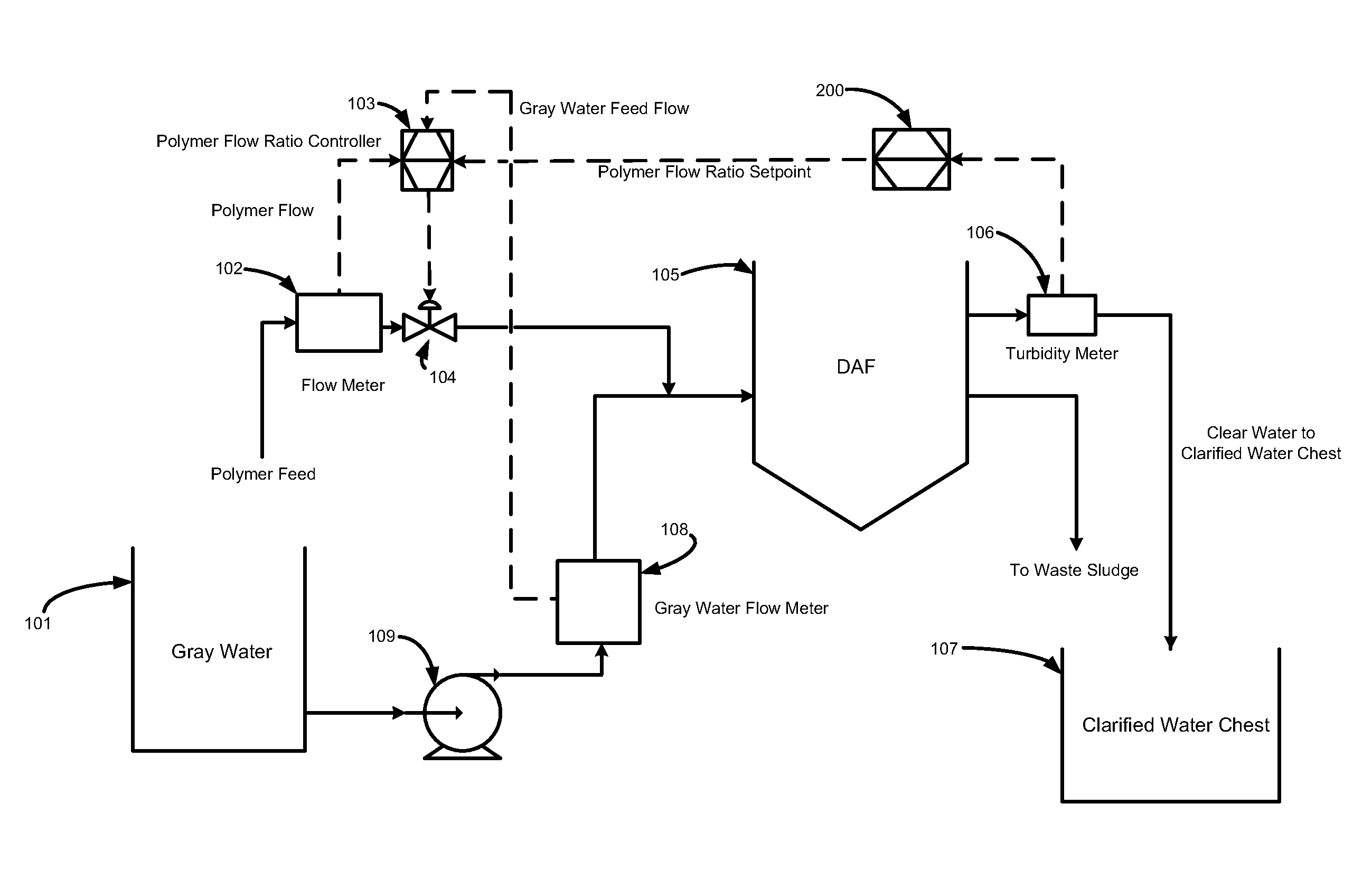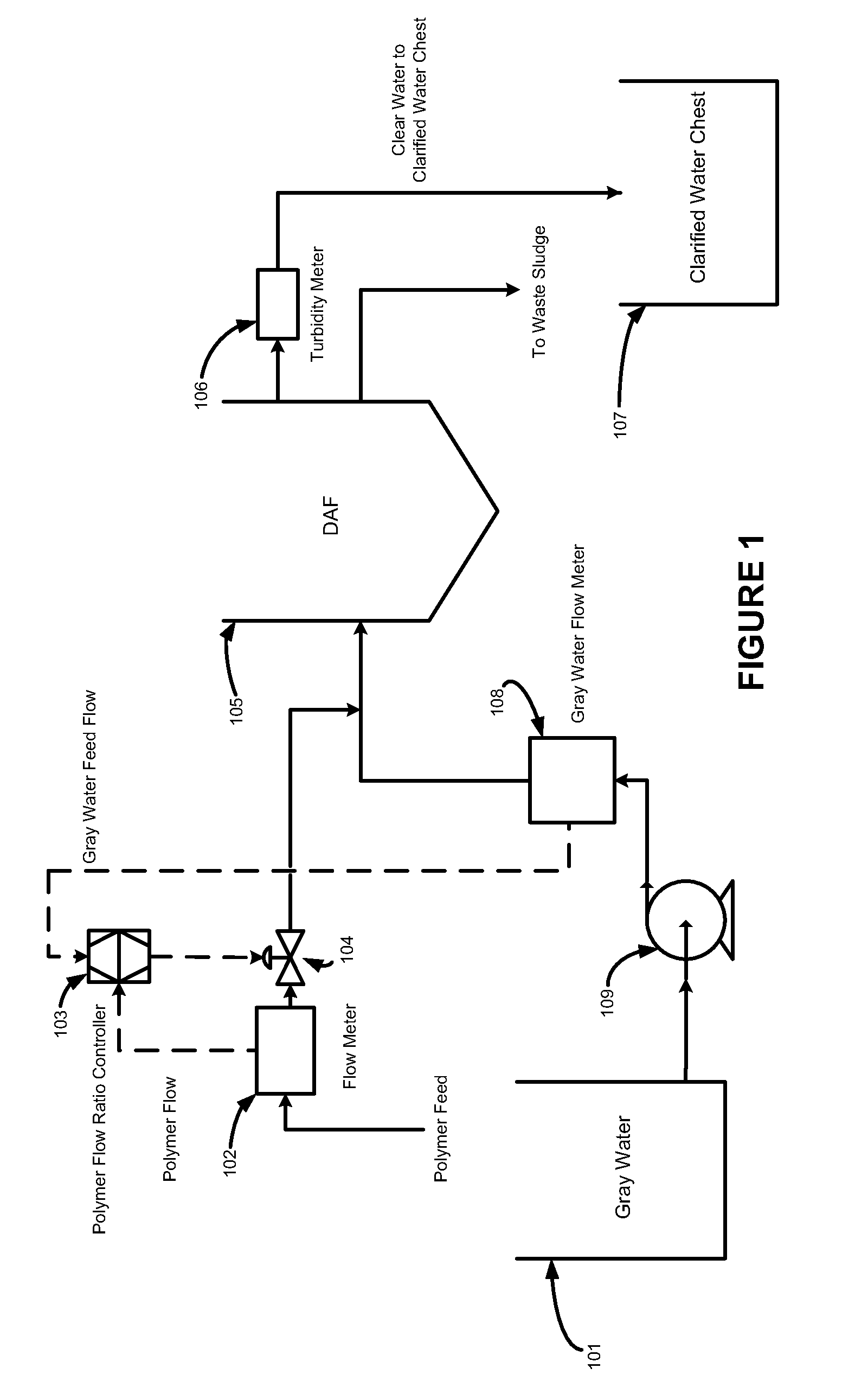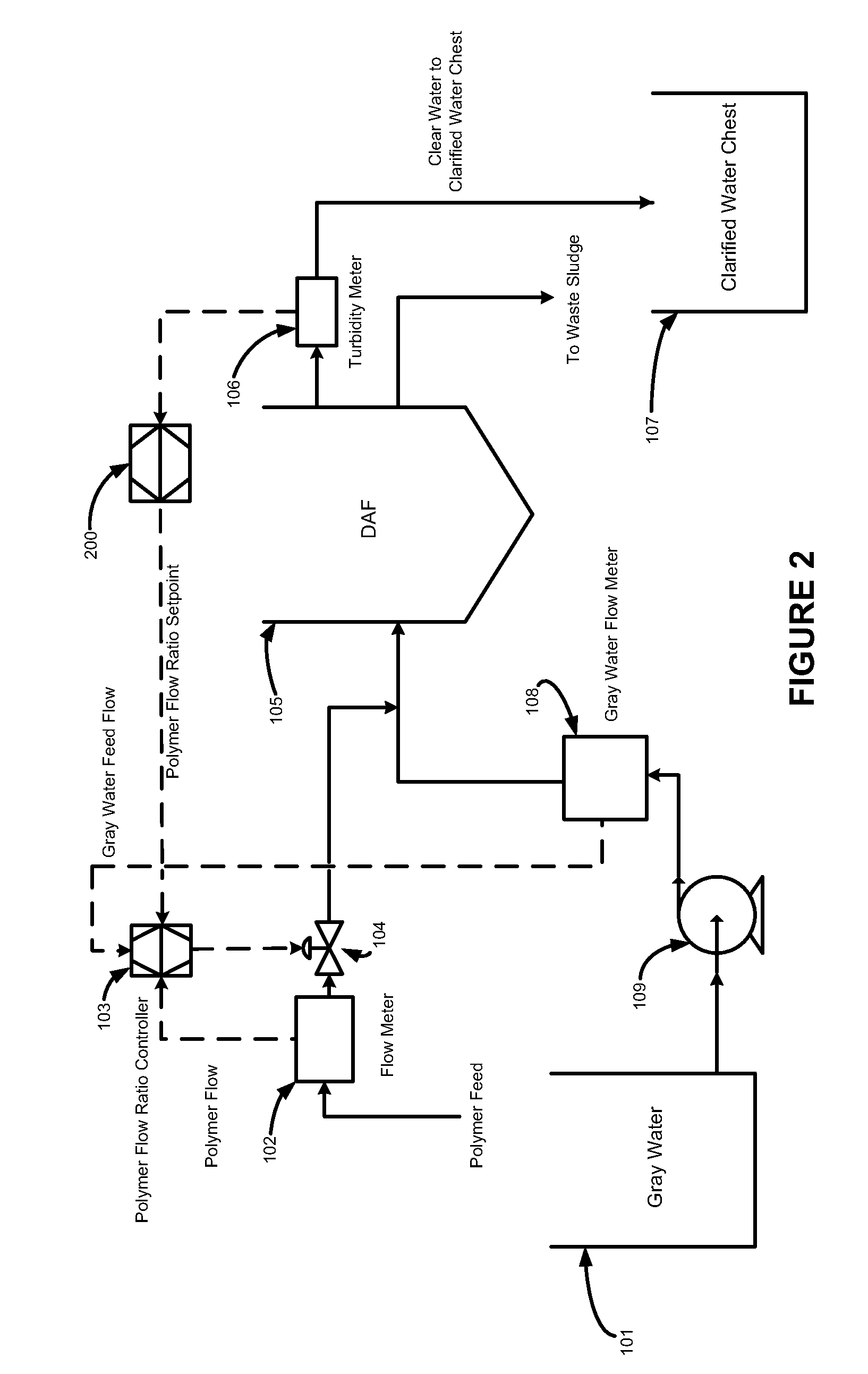Feedback control scheme for optimizing dewatering processes
a control scheme and dewatering technology, applied in the field of dewatering effluents, can solve the problems of increasing the amount of thermal drying required, putting in ways, and requiring a large amount of effor
- Summary
- Abstract
- Description
- Claims
- Application Information
AI Technical Summary
Benefits of technology
Problems solved by technology
Method used
Image
Examples
first embodiment
[0038]FIG. 2 shows a simplified schematic of the present inventive apparatus implemented within a dewatering process involving dissolved air flotation. As the basic physical architecture within FIG. 2 is substantially similar to prior art FIG. 1, like numerals are used for like elements.
[0039]As before, gray water is supplied to a tank 101 as effluent from some known industrial process (not shown). A pump 109 moves the gray water through a line to a diffused air flotation device (DAF) 105. A flow meter 108 typically resides in the line between the pump 109 and DAF 105 in order to provide information on the rate of gray water flow to the DAF 105. This information is used by a controller 103 that controls the flow ratio of polymer additive relative to gray water. To that end, another flow meter 102 is provided in the polymer feed line so as to provide polymer flow information to the controller 103. As a product of the flocculation within the DAF 105, waste sludge is separated from the...
second embodiment
[0056]Sludge dewatering as an implementation of the present invention is shown by way of FIG. 5 which is a simplified schematic of the present inventive apparatus implemented within a dewatering process involving a sludge press device. Again, while specific measurements and settings are used as turbidity thresholds, delays, and polymer adjustment increments, it should be readily understood that all such measurements and settings may vary in accordance with the given industrial application using the inventive methodology without straying from the intended scope of the present invention. Therefore, it should be understood that such measurements and settings as discussed herein below are illustrative of the present embodiments with regard to a sludge press device and should not be considered limiting in terms of the instant invention.
[0057]In general, the sludge dewatering system shown in FIG. 5 functions by configuring an amperage control scheme that controls the press feed rate by co...
PUM
| Property | Measurement | Unit |
|---|---|---|
| volume | aaaaa | aaaaa |
| turbidity | aaaaa | aaaaa |
| smoothness | aaaaa | aaaaa |
Abstract
Description
Claims
Application Information
 Login to View More
Login to View More - R&D
- Intellectual Property
- Life Sciences
- Materials
- Tech Scout
- Unparalleled Data Quality
- Higher Quality Content
- 60% Fewer Hallucinations
Browse by: Latest US Patents, China's latest patents, Technical Efficacy Thesaurus, Application Domain, Technology Topic, Popular Technical Reports.
© 2025 PatSnap. All rights reserved.Legal|Privacy policy|Modern Slavery Act Transparency Statement|Sitemap|About US| Contact US: help@patsnap.com



